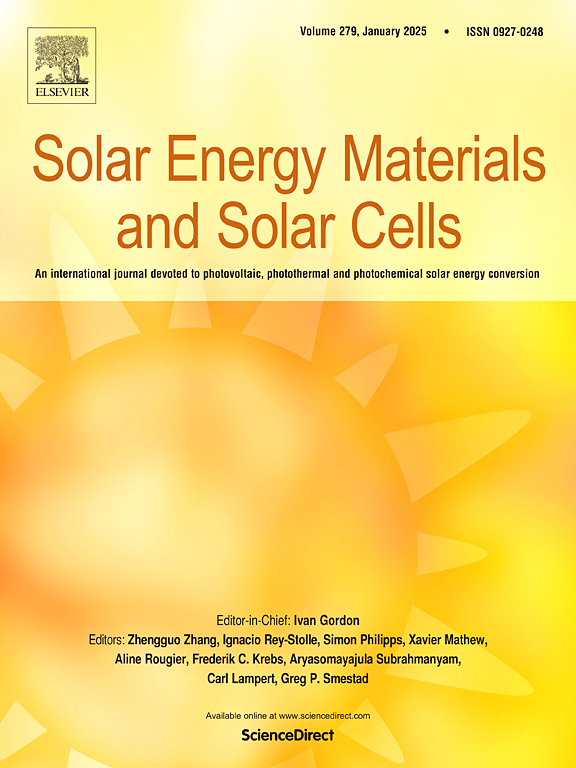全球光伏(PV)技术退化率简编:来自技术、气候和地理的见解
IF 6.3
2区 材料科学
Q2 ENERGY & FUELS
引用次数: 0
摘要
全球太阳能部署的飞跃引发了工业界和学术界对光伏技术退化率的广泛兴趣。降解率显著影响光伏产业的可靠性、财务可行性和可持续性。由于近年来技术的快速迭代和全球部署的增加,有必要研究近五年来光伏技术在长期户外暴露下的退化情况。更重要的是,目前还不清楚光伏技术的退化率如何演变,以及它们的技术、气候和地理分布。本研究汇编了过去五年中文献中报道的光伏技术户外现场测试的降解率,并在测量模型、技术、气候和地理方面提供了更细致和全面的分析。结果表明,全球光伏技术降解率中位数为1.00 %/年,平均为1.27% /年,较2016年和2013年有所上升。退化率随技术、气候和地理的不同呈现出不同的分布。不断上升的降解率将直接缩短光伏的使用寿命,减少输出功率,导致更高的能源成本和更快达到光伏用户的保修限制。更高的降解率将迫使光伏技术更快地达到使用寿命,从而增加全球潜在的光伏废物流。本文章由计算机程序翻译,如有差异,请以英文原文为准。
Compendium of degradation rates of global photovoltaic (PV) technology: insights from technology, climate and geography
The leap in global solar energy deployment has sparked widespread industrial and academic interest in degradation rates of PV technology. Degradation rates significantly impact the PV industry's reliability, financial viability, and sustainability. Due to the recent rapid technology iterations and increase in global deployment, it is necessary to investigate the degradation of PV technologies under long-term outdoor exposure in the last five years. More importantly, it remains unclear how degradation rates of PV technologies evolve, as well as their technological, climatic, and geographical distribution. This study compiles degradation rates by outdoor field tests of PV technologies reported in the literature over the last five years and provides more a nuanced and comprehensive analysis in terms of measurement model, technology, climate, and geography compared to previous compendiums. Results show that globally median degradation rate of PV technology has been 1.00 %/year, with a mean of 1.27 %/year, an increase compared to 2016 and 2013. Degradation rates show various distributions by technology, climate and geography. Rising degradation rates will directly shorten the PV lifespan and reduce the power output, leading to a higher levelized cost of energy and quicker reaching of warranty limits for PV users. Higher degradation rates will force PV technologies to reach end-of-life faster, increasing the potential PV waste stream worldwide.
求助全文
通过发布文献求助,成功后即可免费获取论文全文。
去求助
来源期刊

Solar Energy Materials and Solar Cells
工程技术-材料科学:综合
CiteScore
12.60
自引率
11.60%
发文量
513
审稿时长
47 days
期刊介绍:
Solar Energy Materials & Solar Cells is intended as a vehicle for the dissemination of research results on materials science and technology related to photovoltaic, photothermal and photoelectrochemical solar energy conversion. Materials science is taken in the broadest possible sense and encompasses physics, chemistry, optics, materials fabrication and analysis for all types of materials.
 求助内容:
求助内容: 应助结果提醒方式:
应助结果提醒方式:


